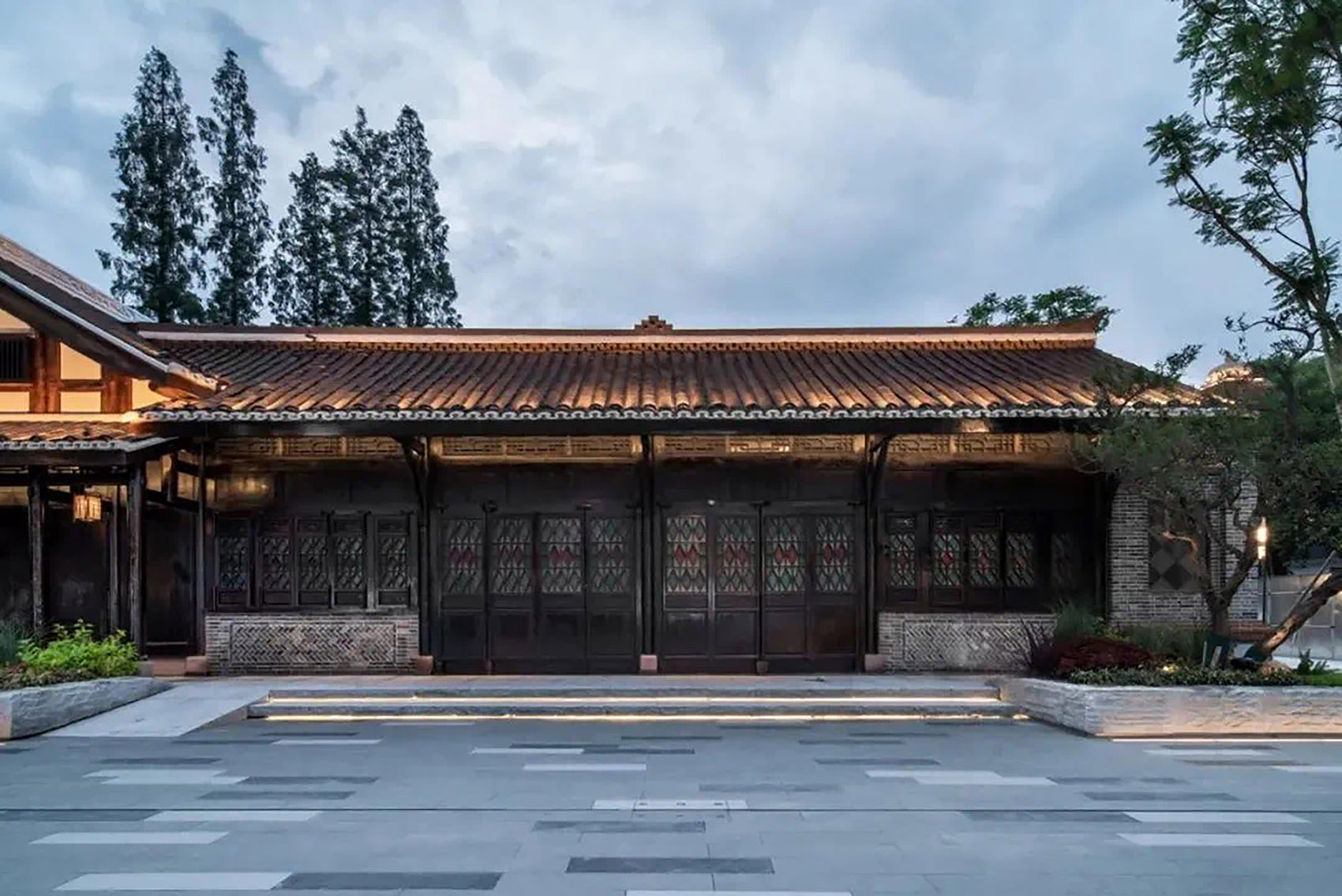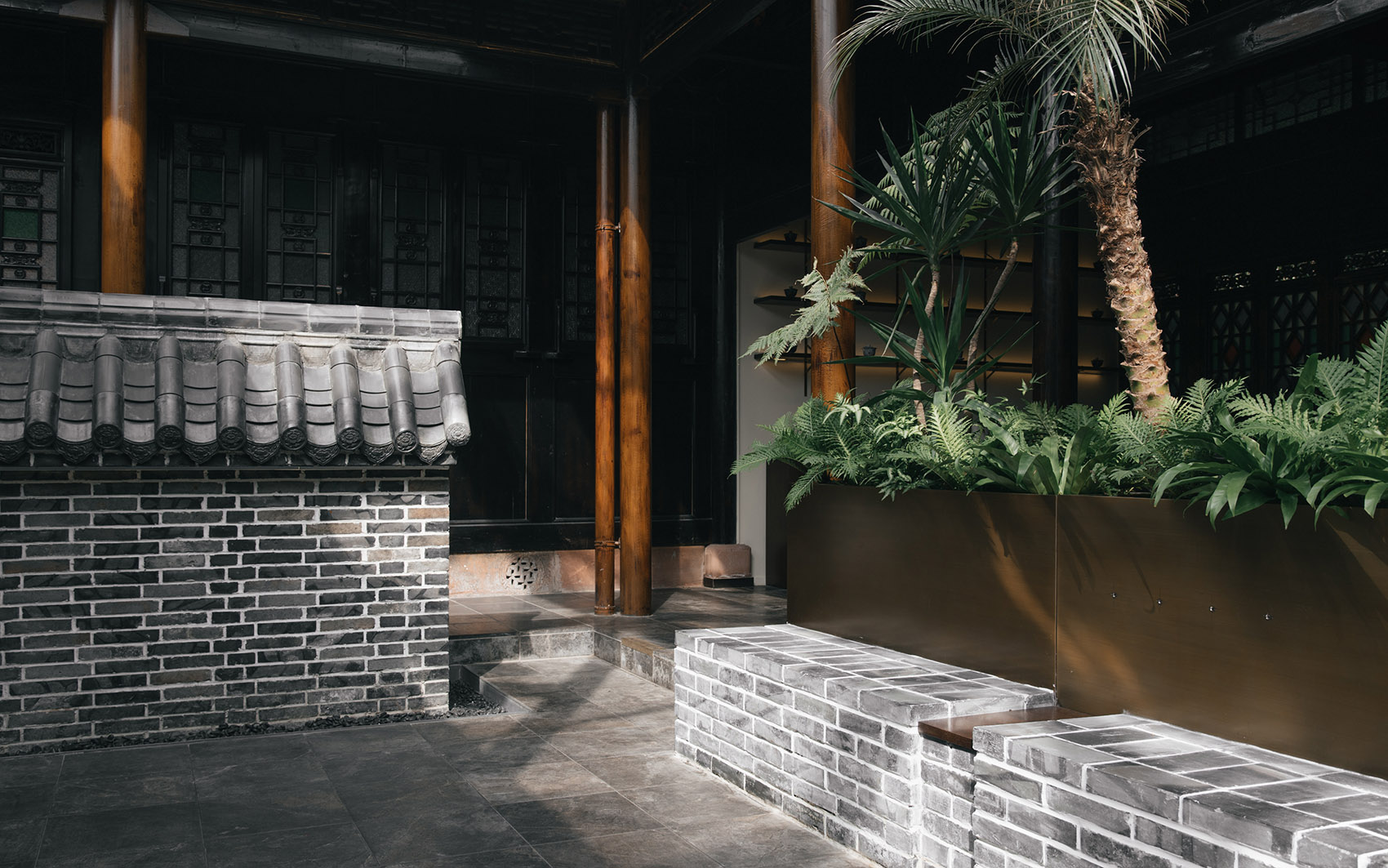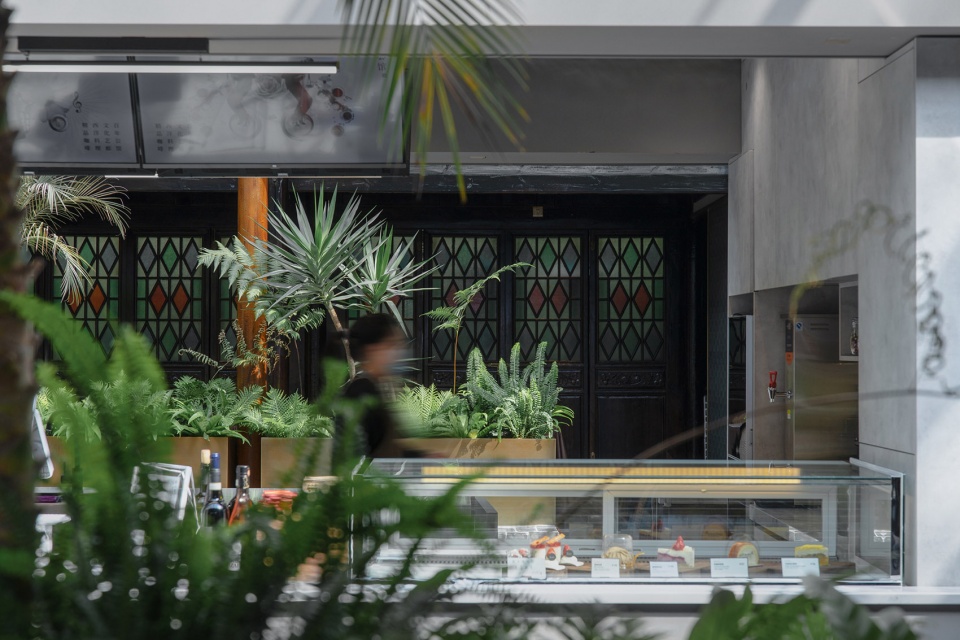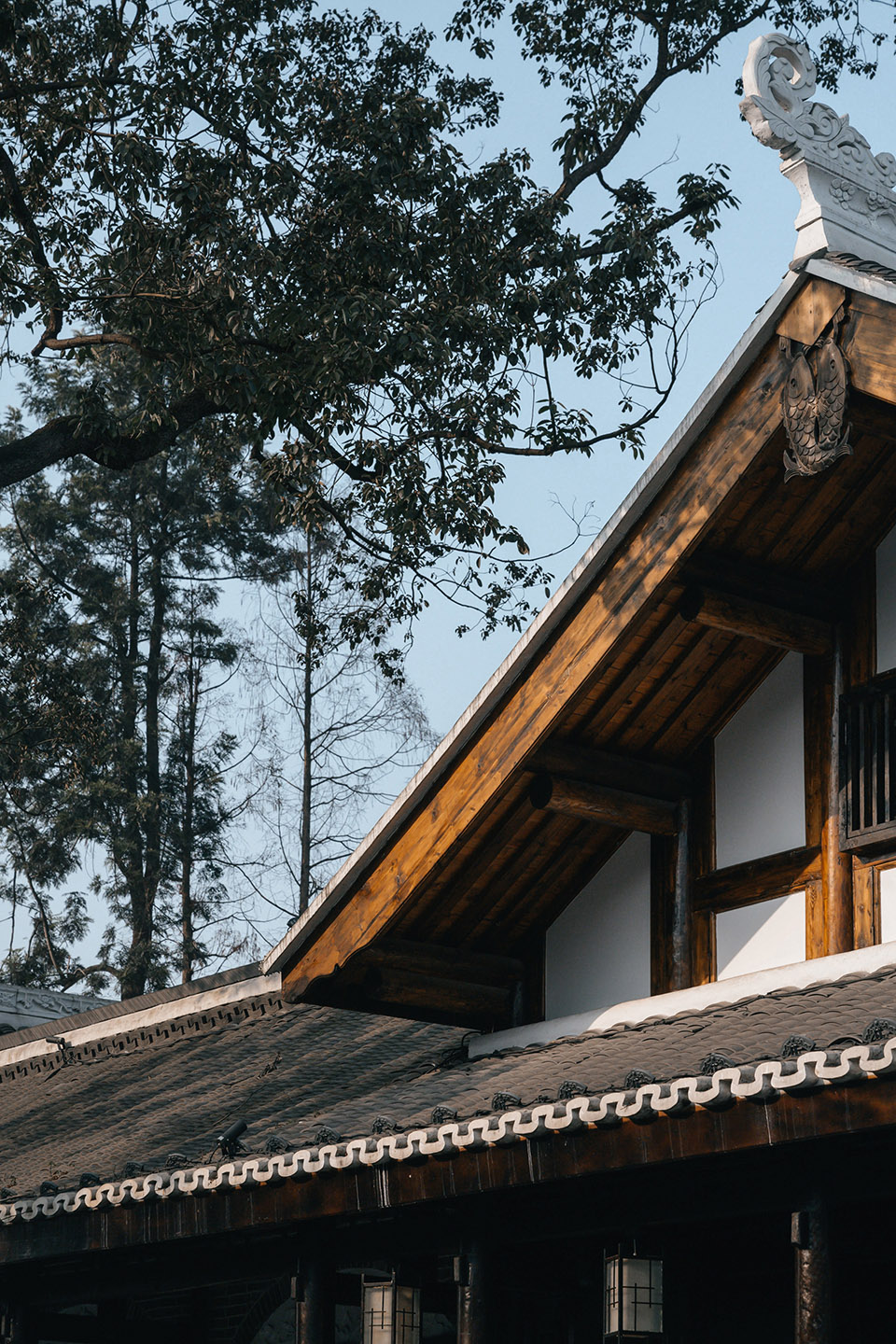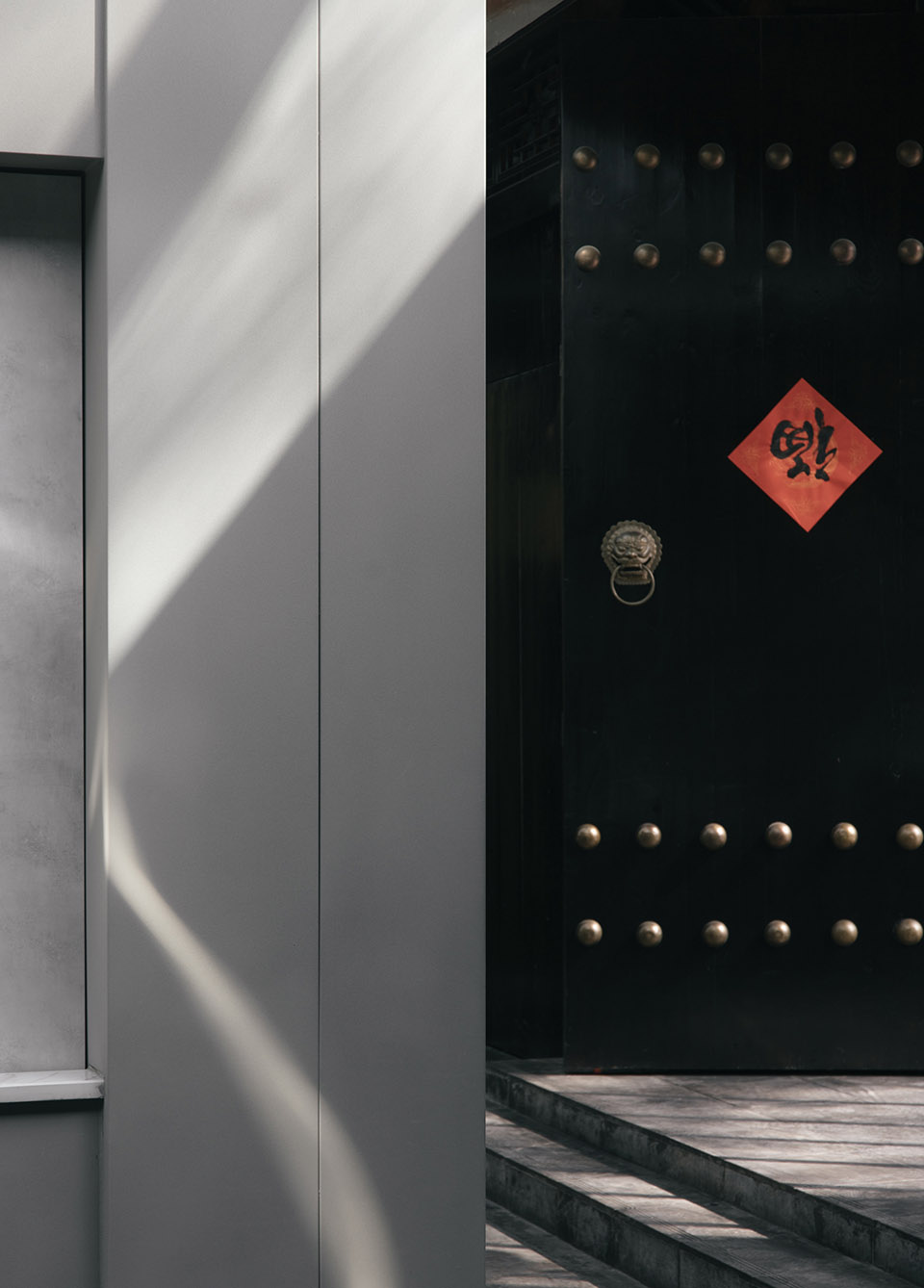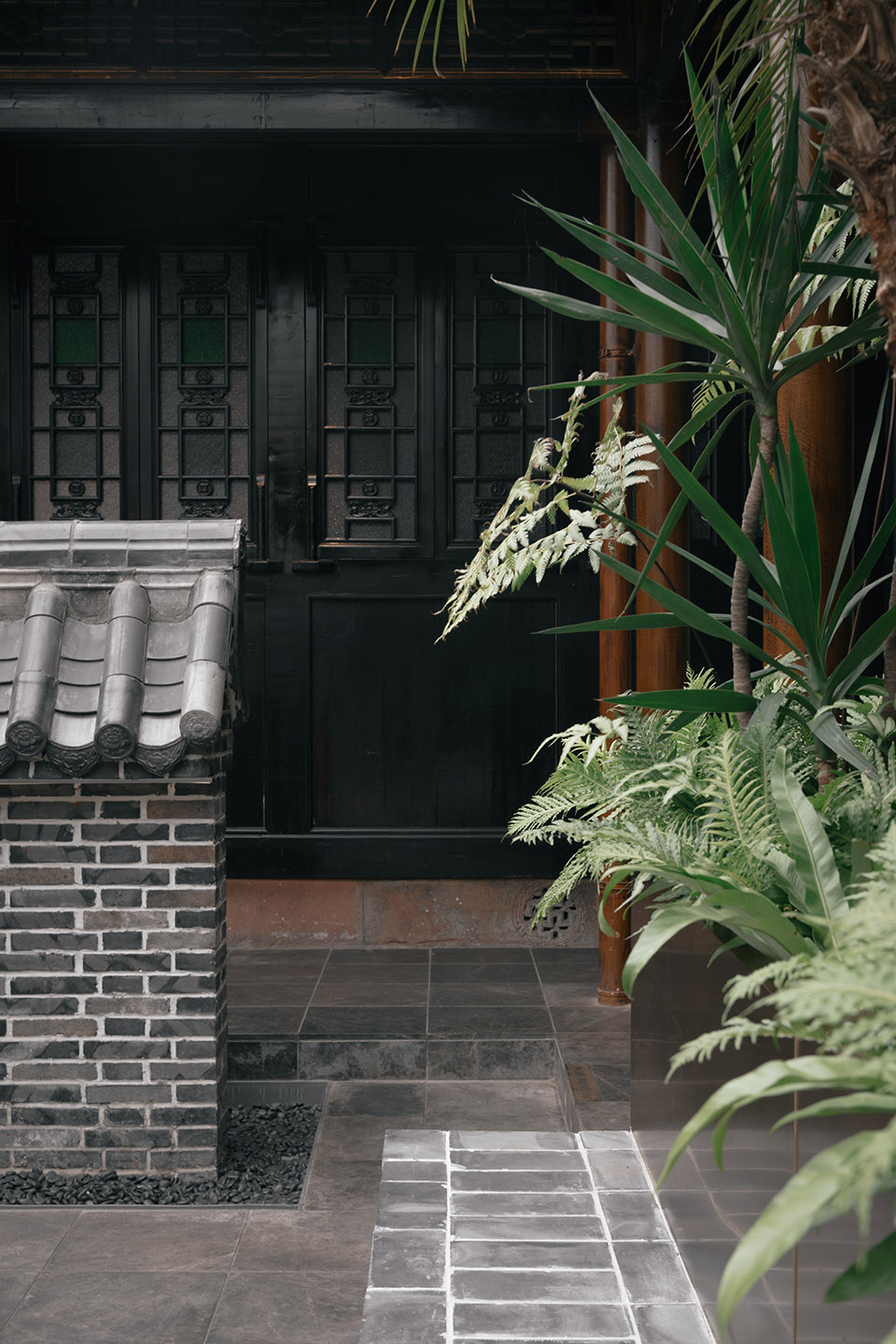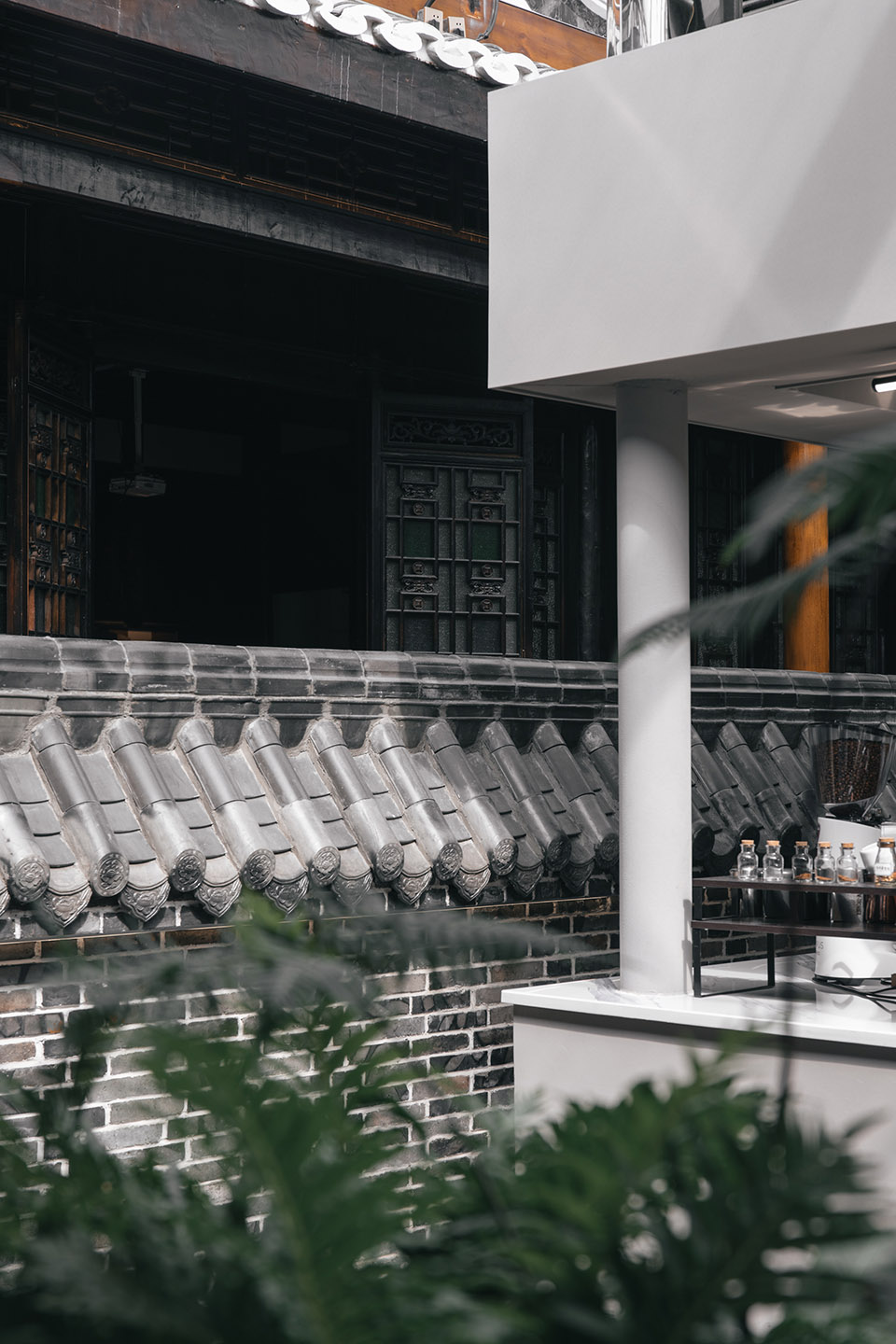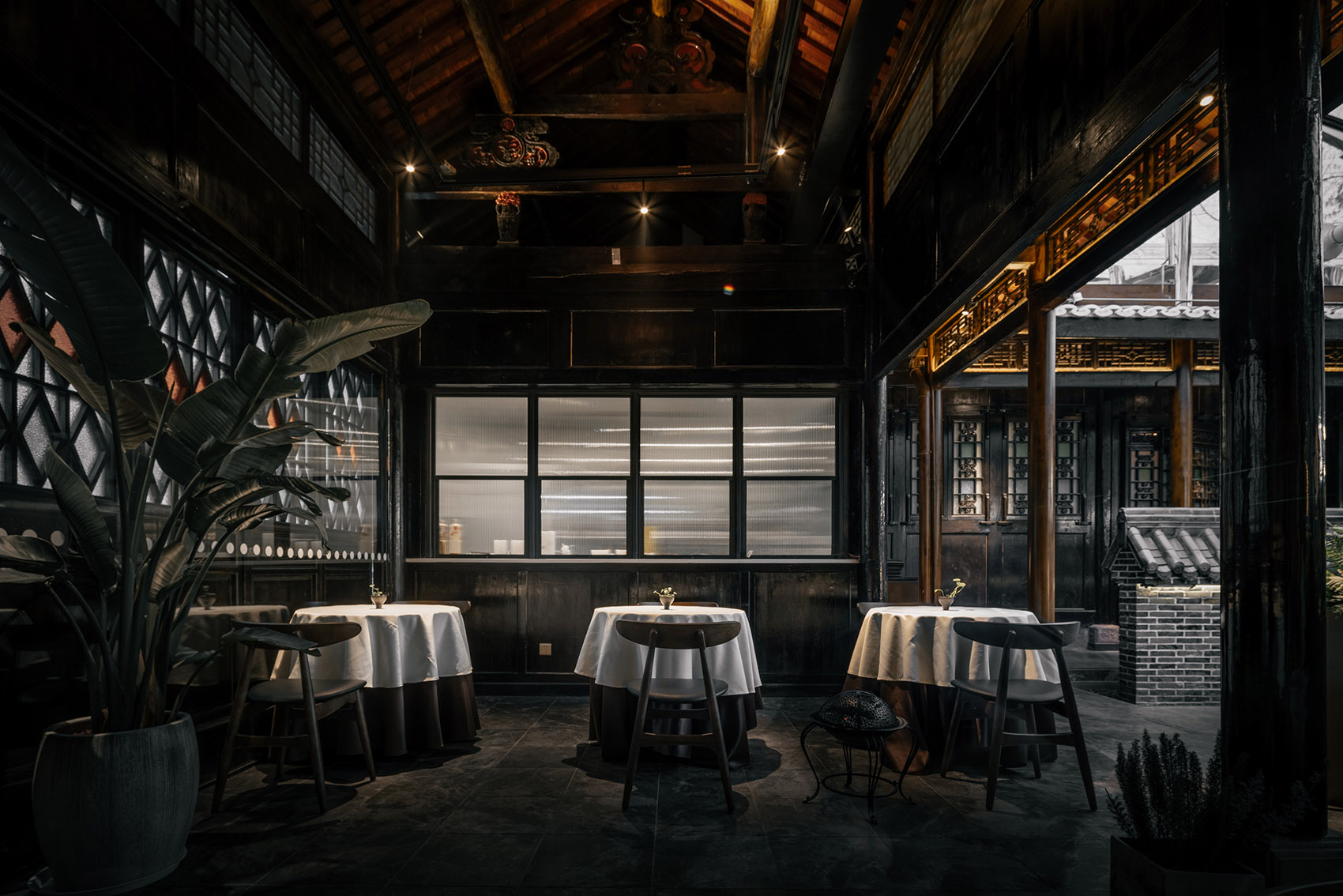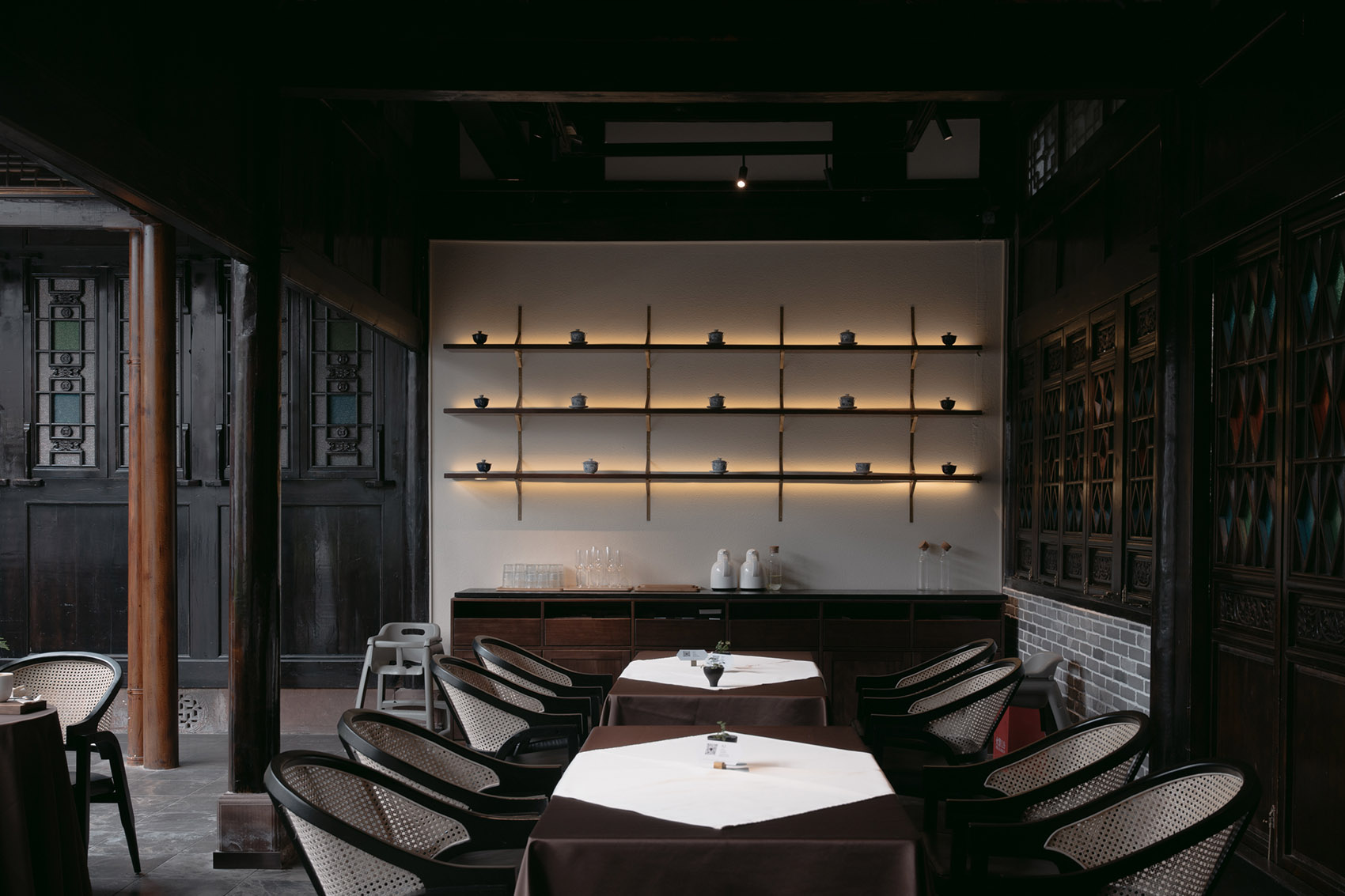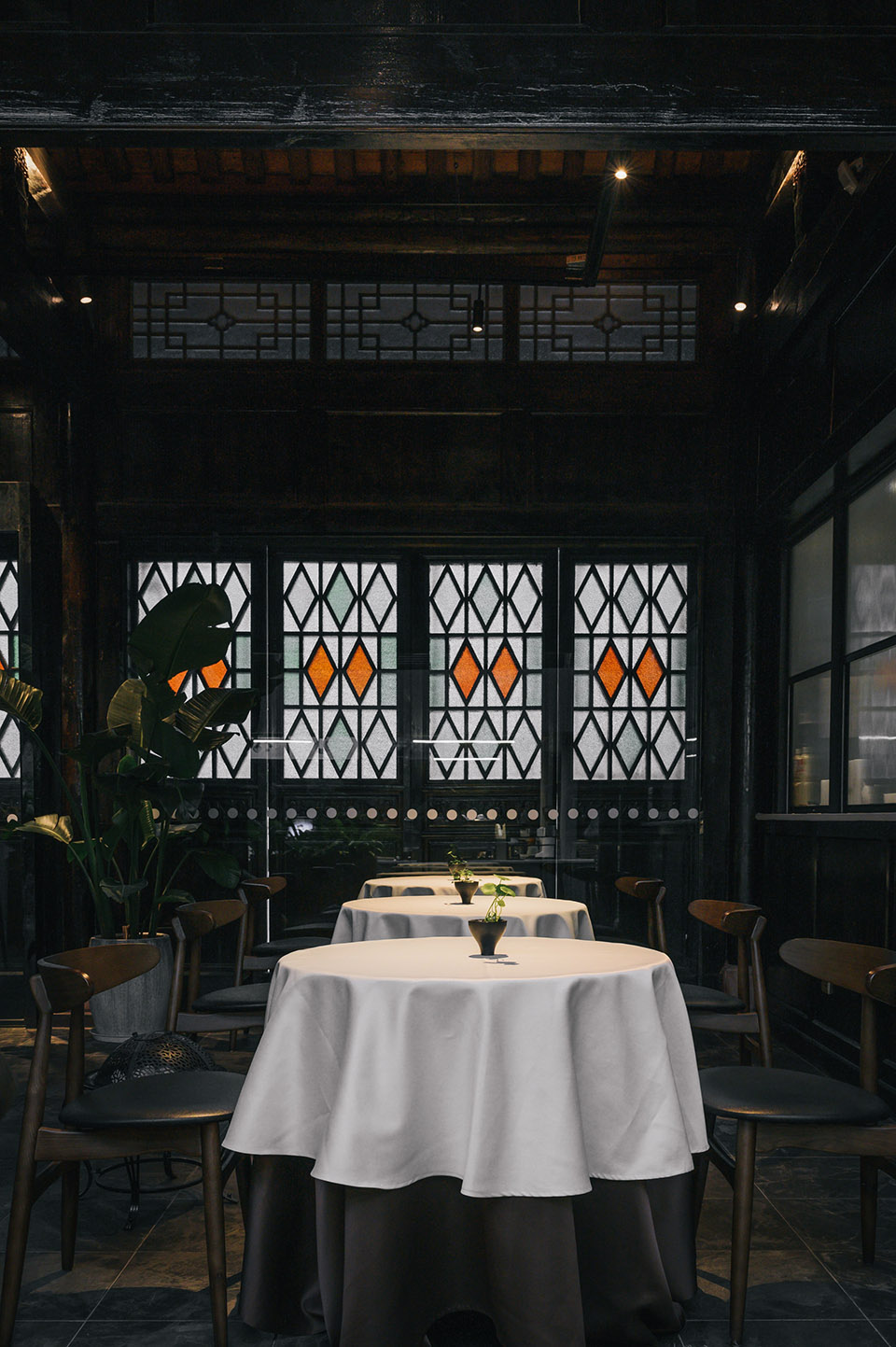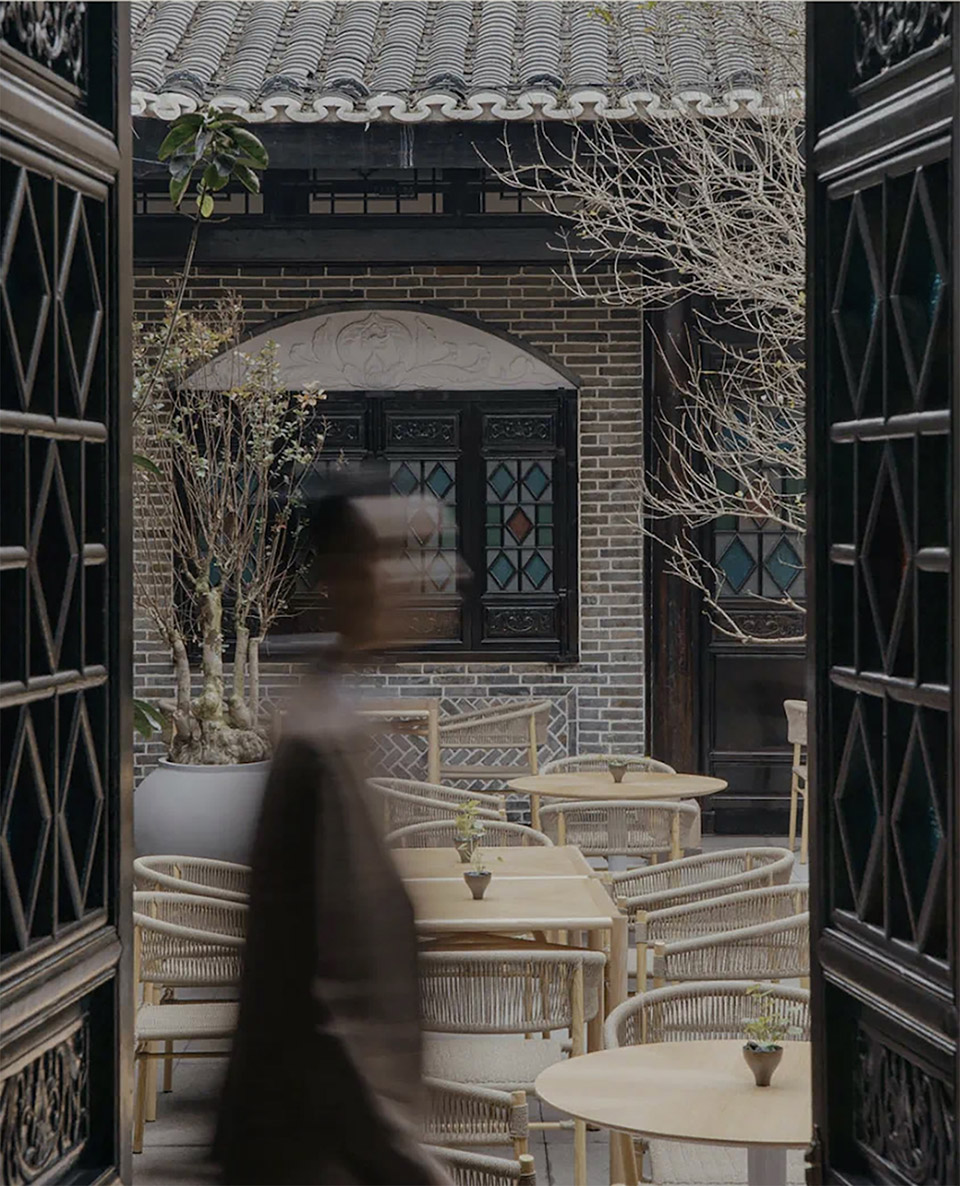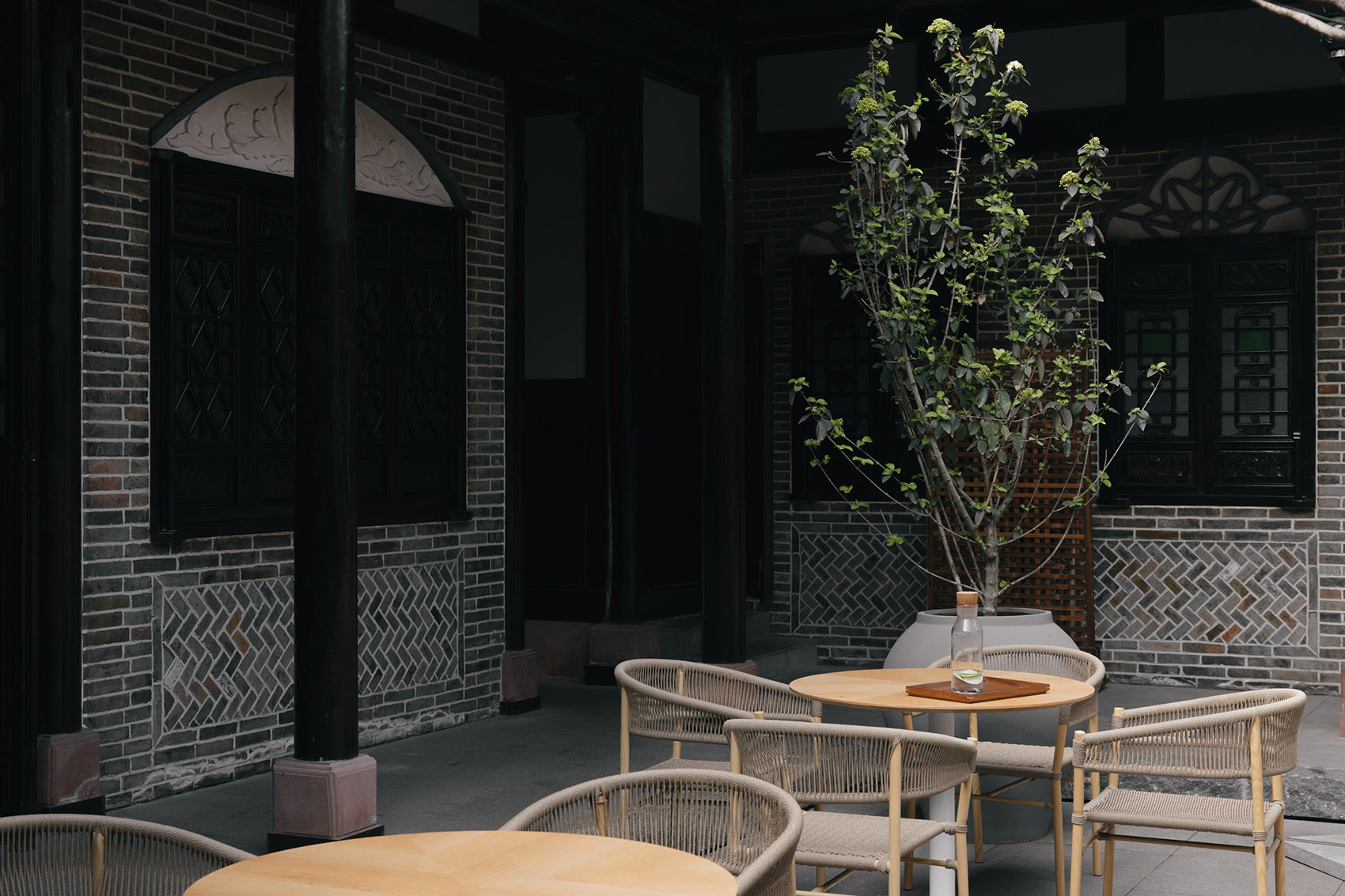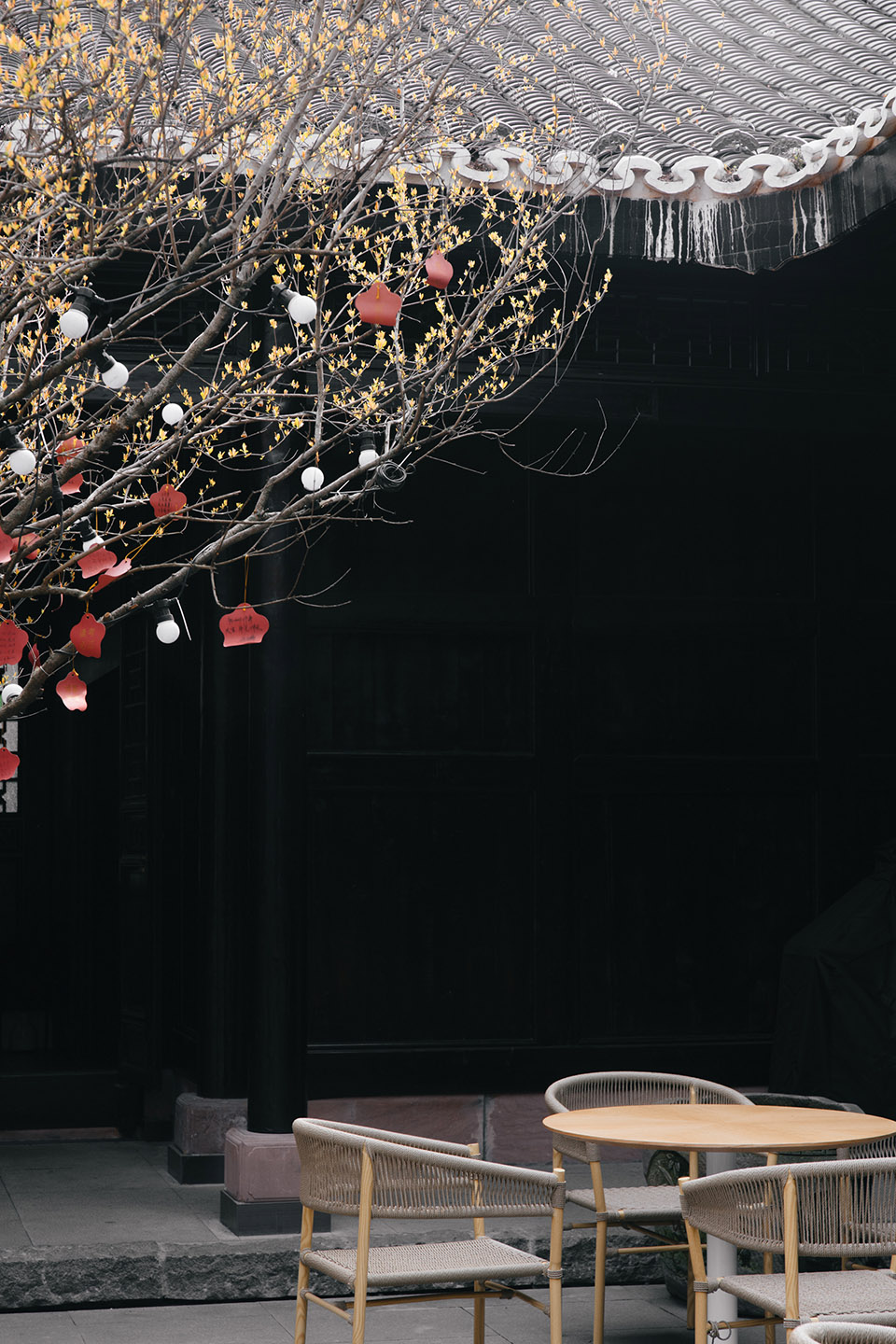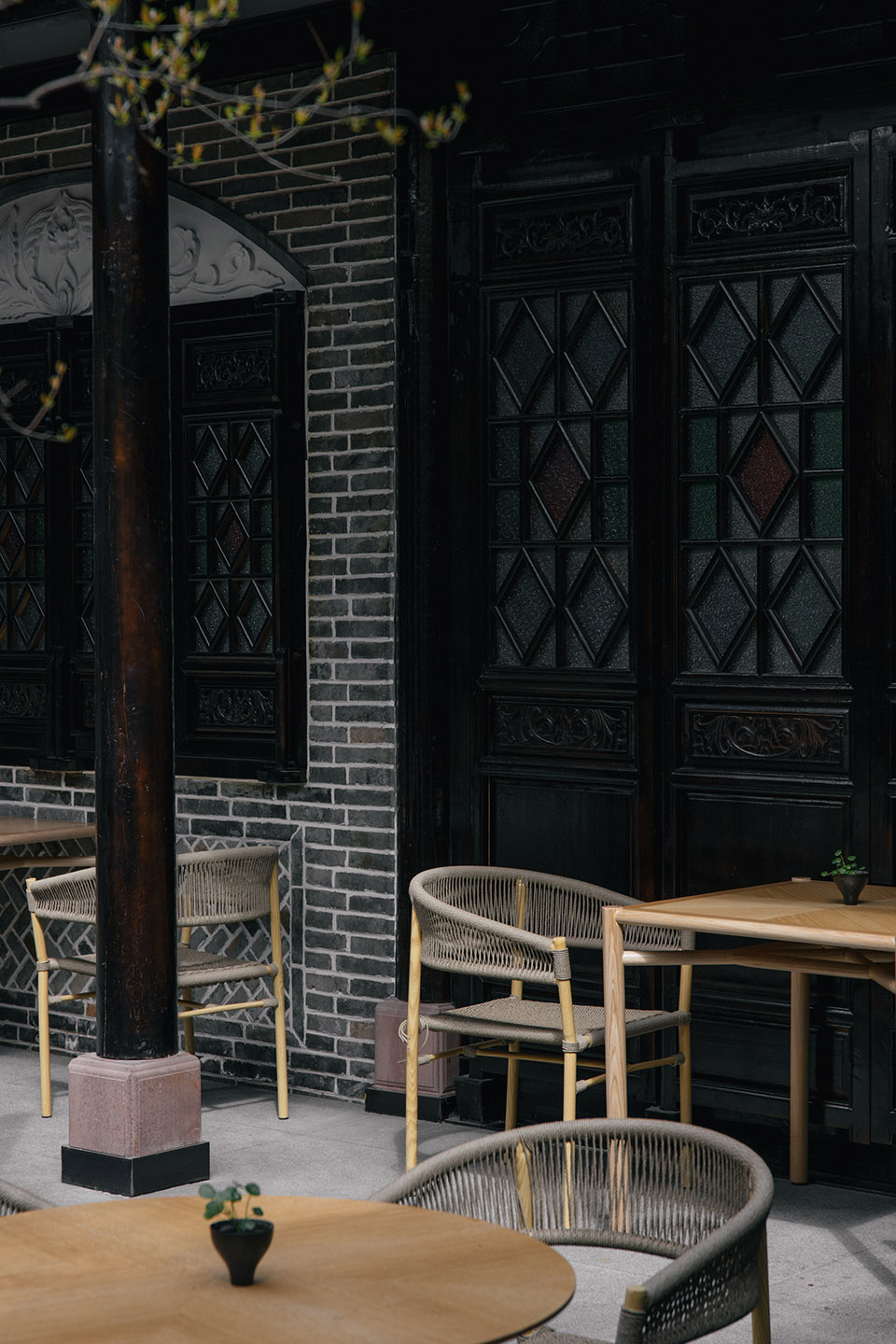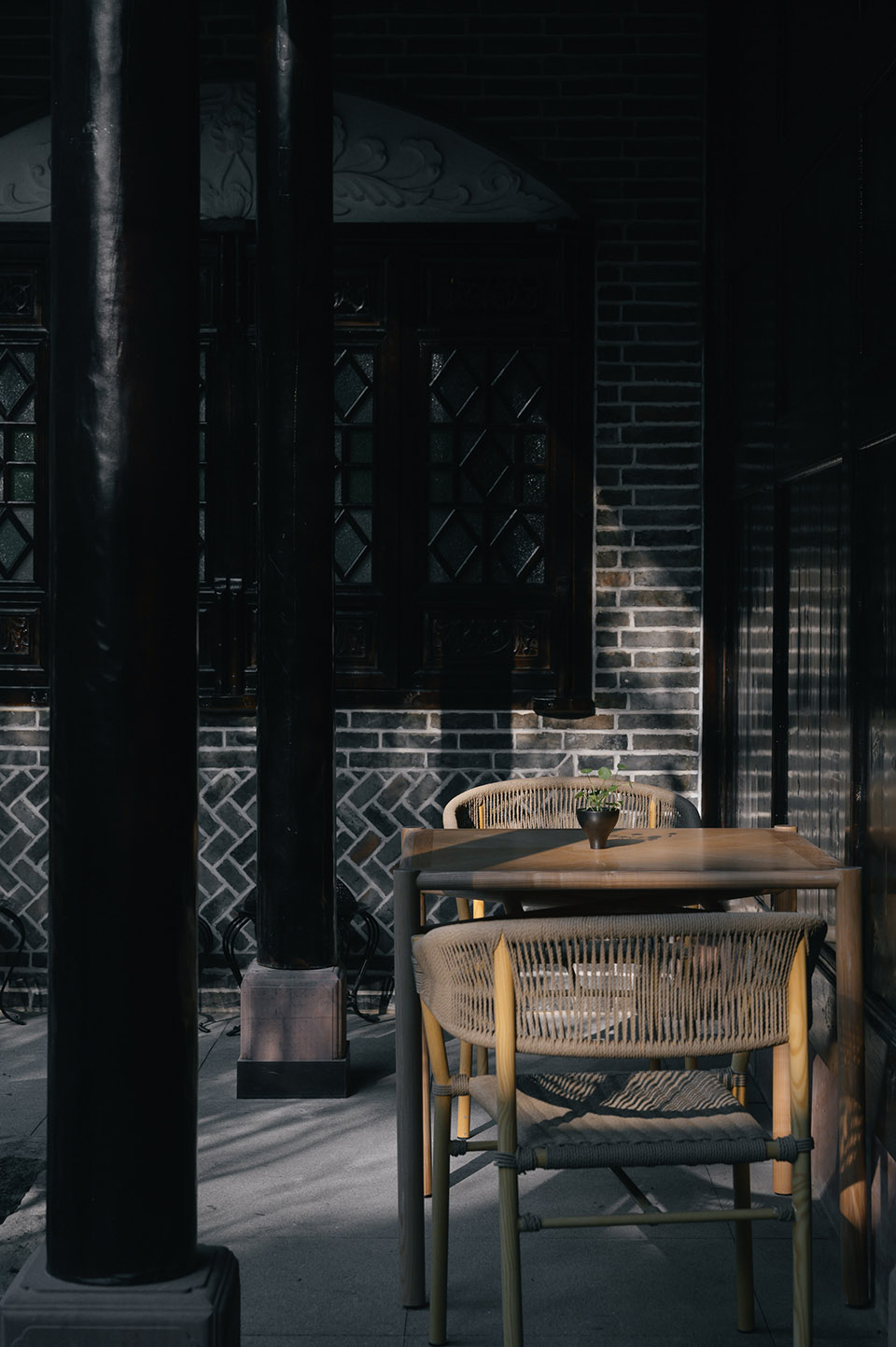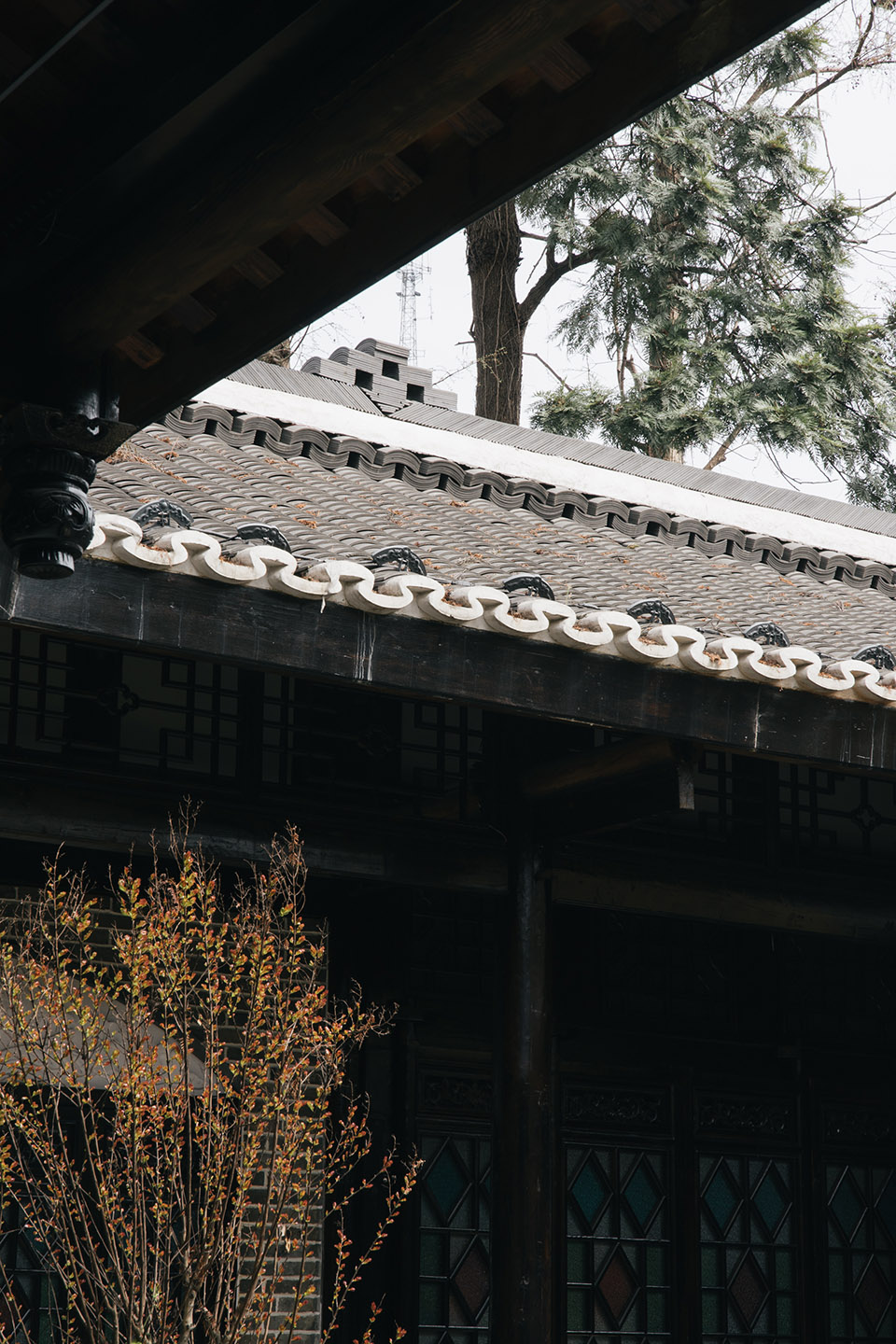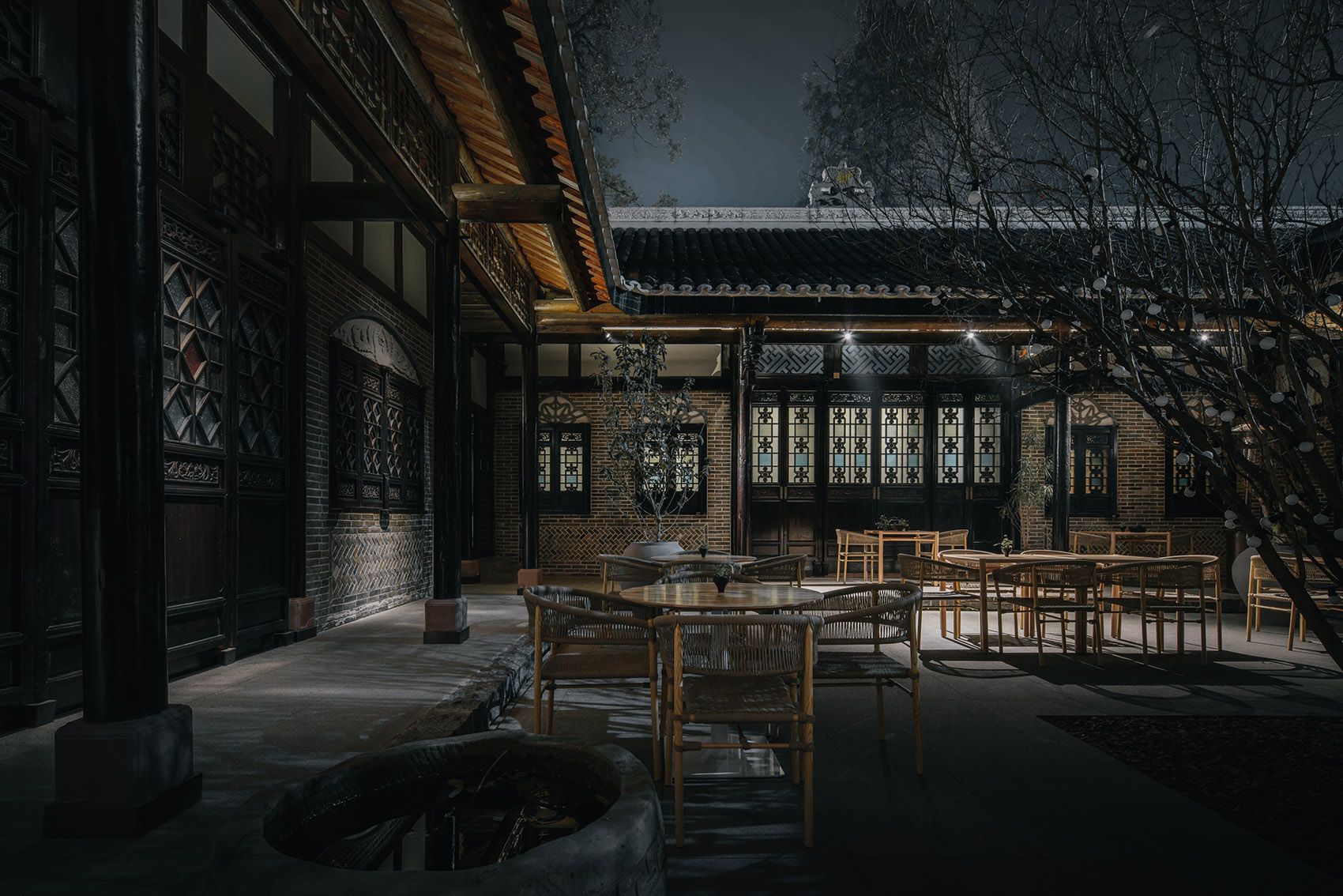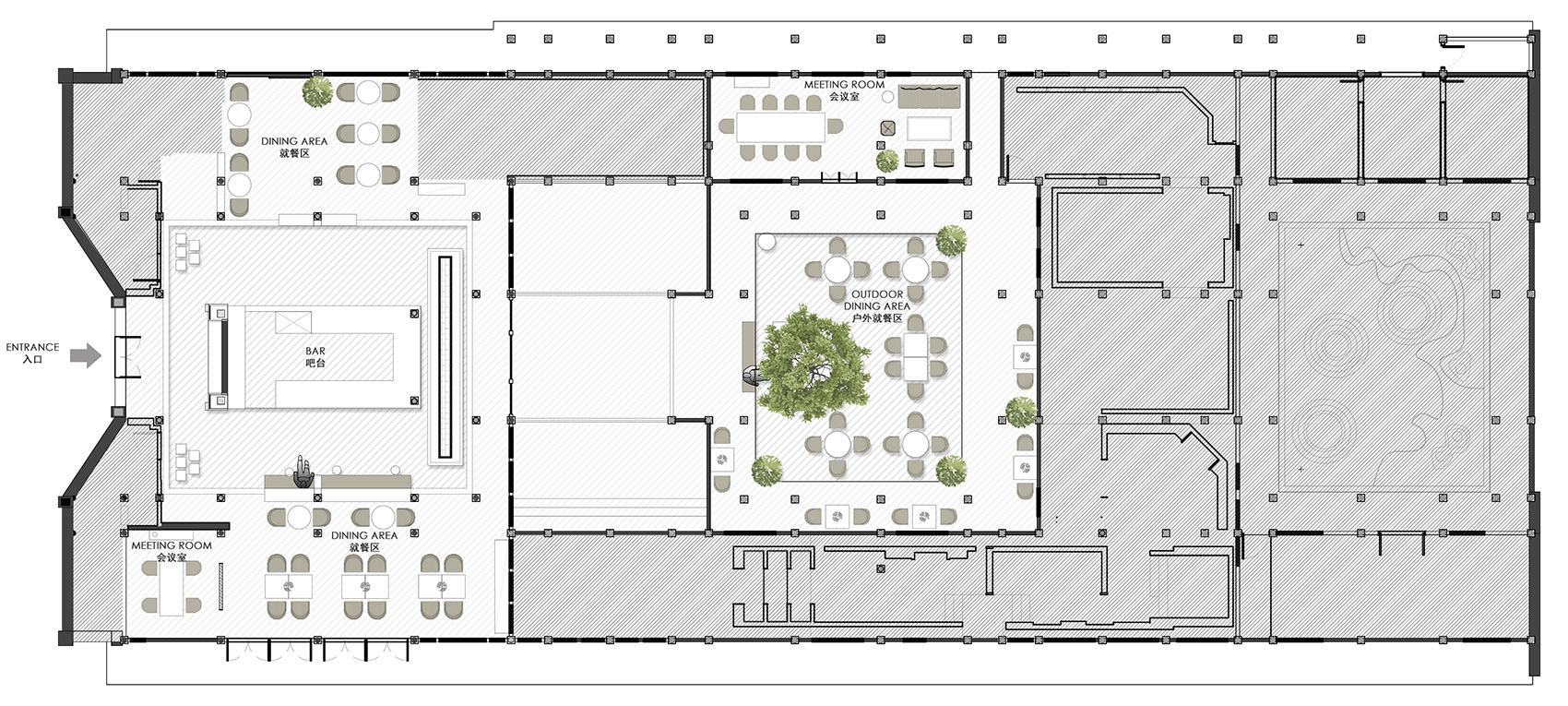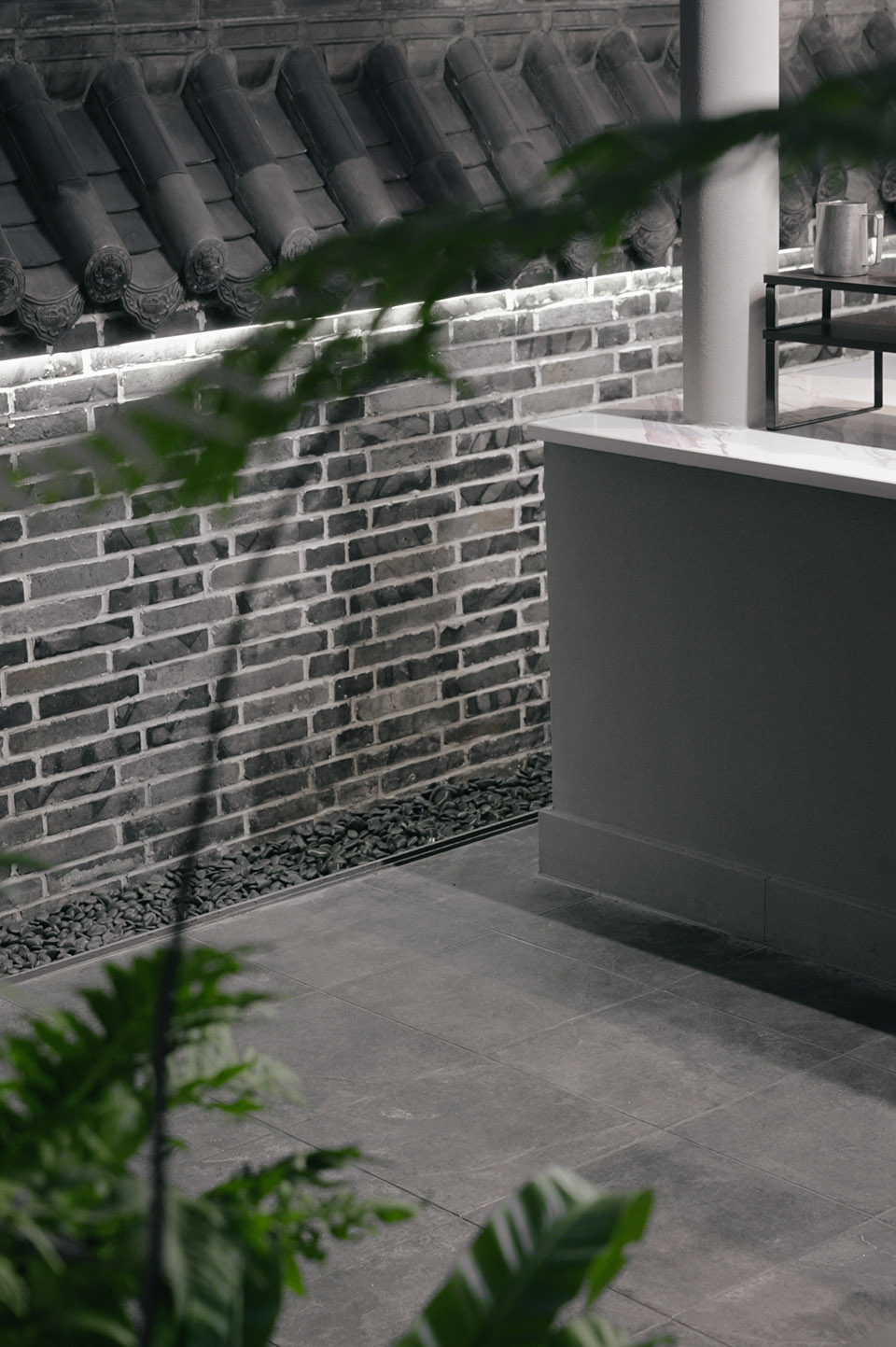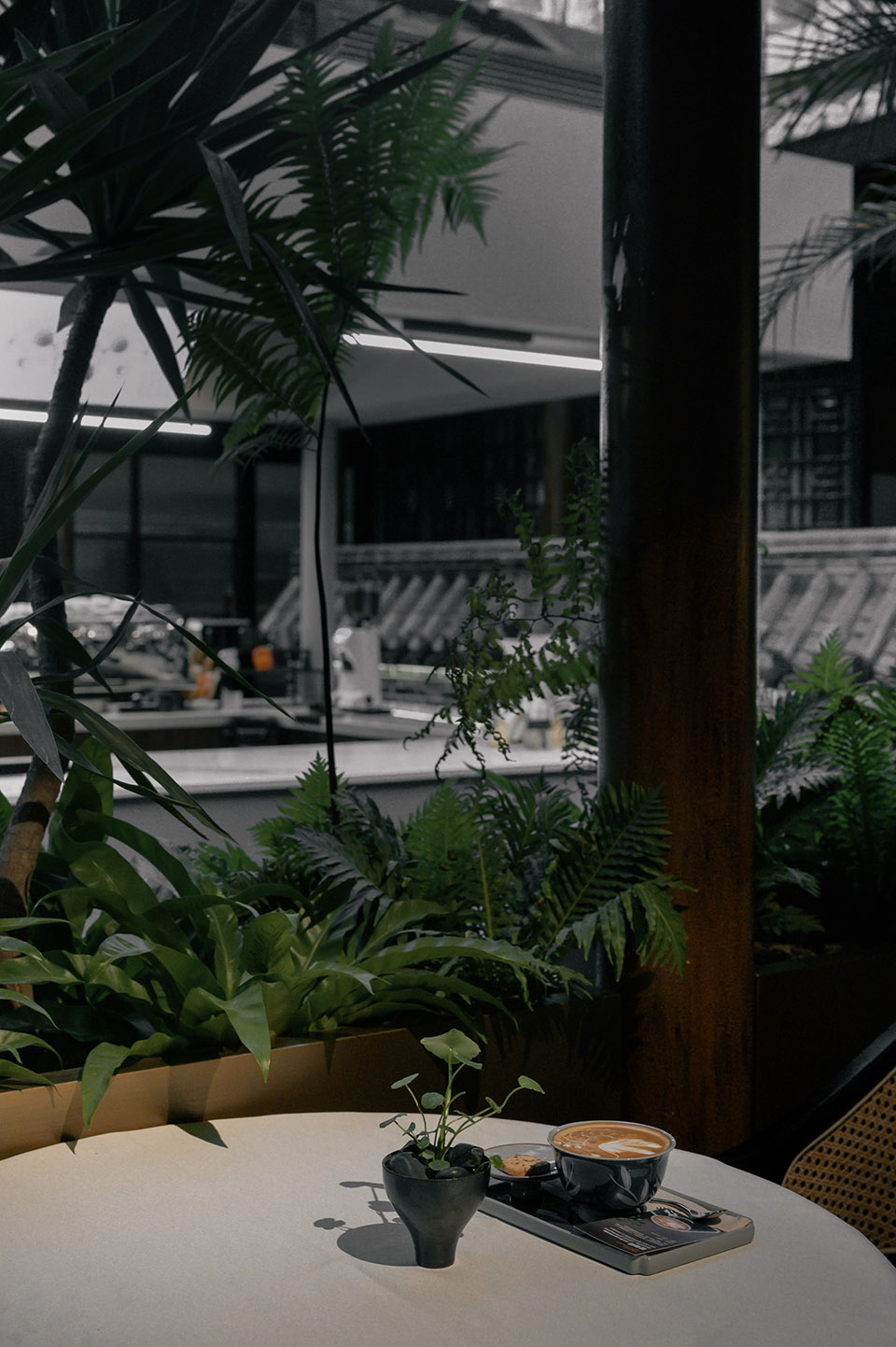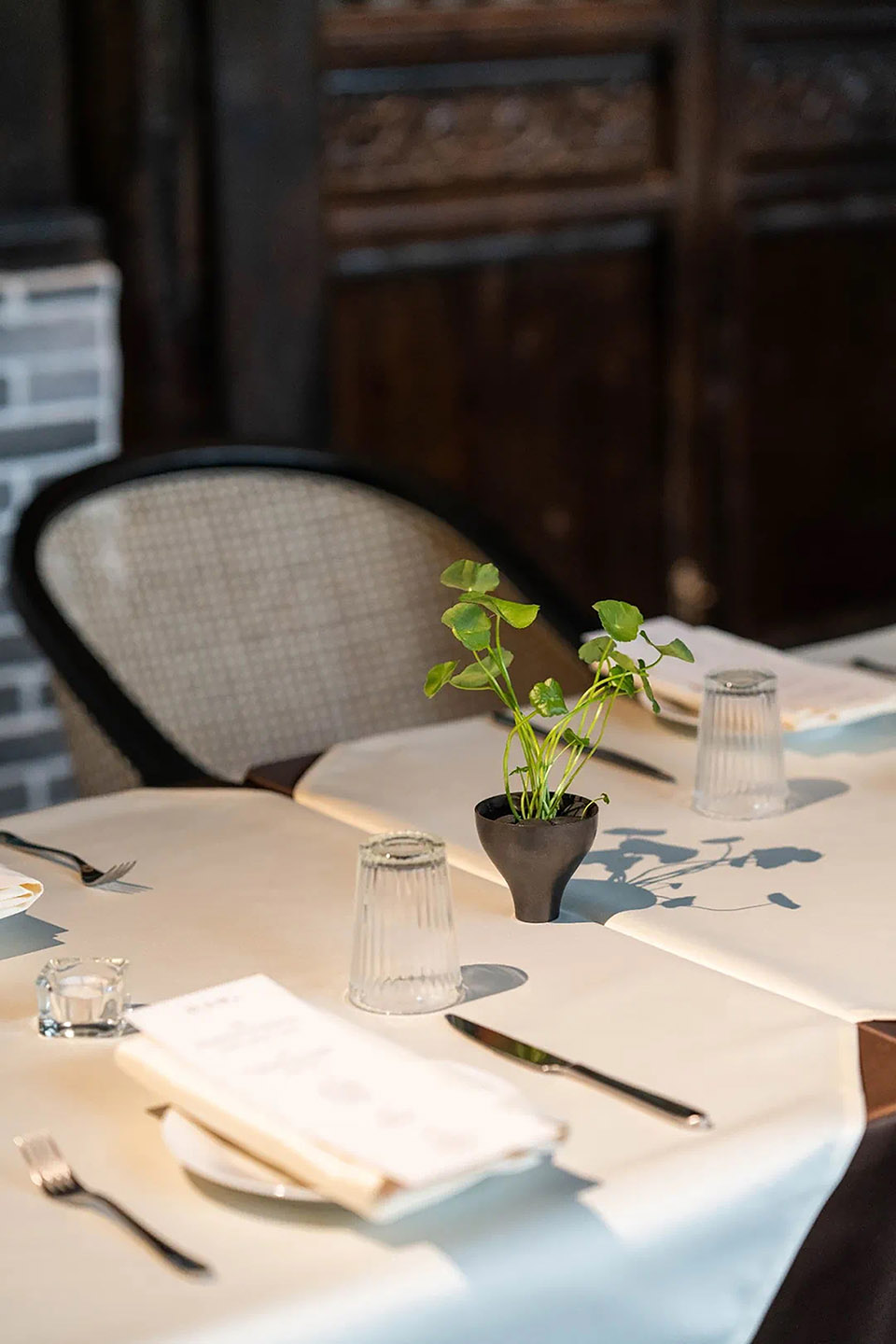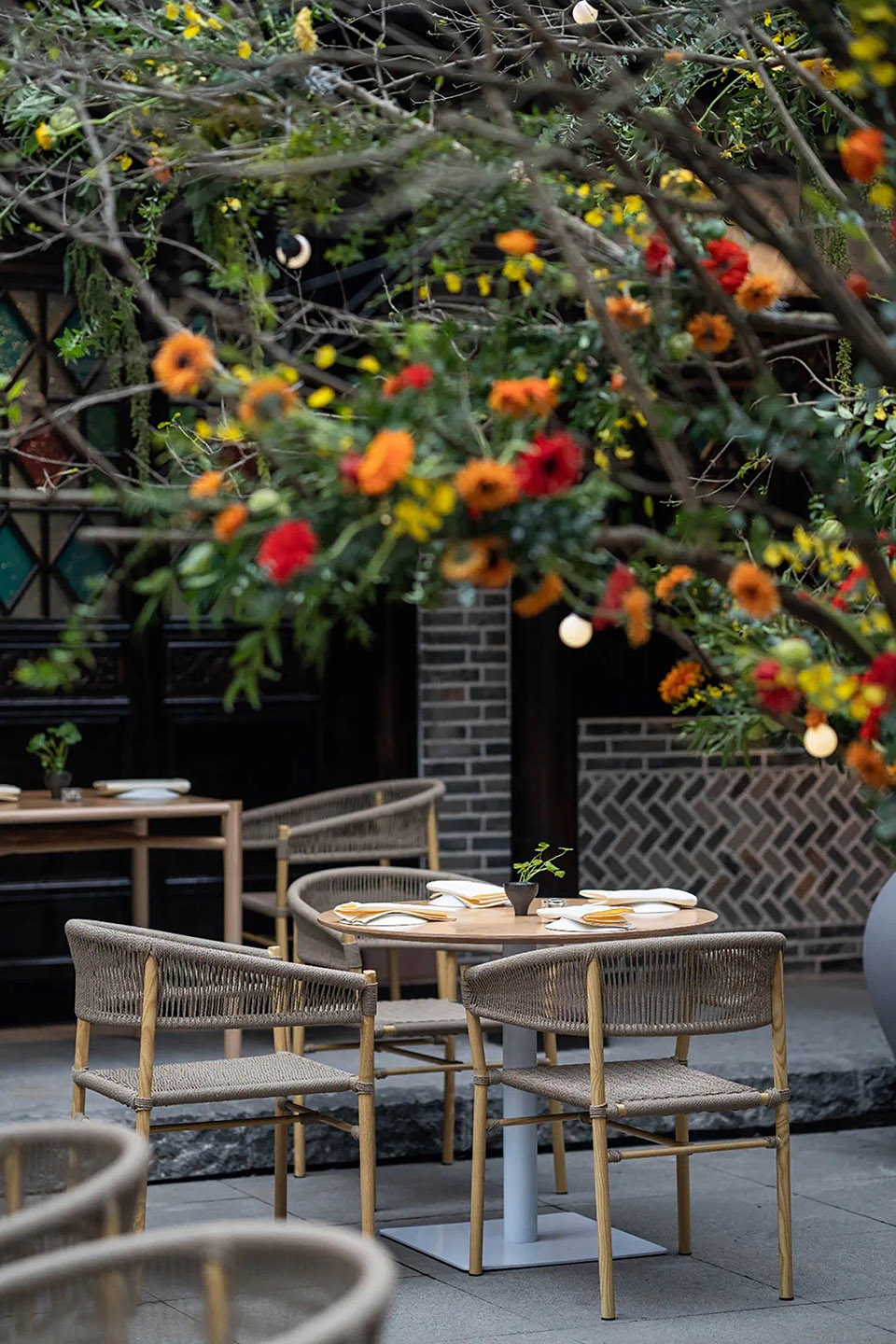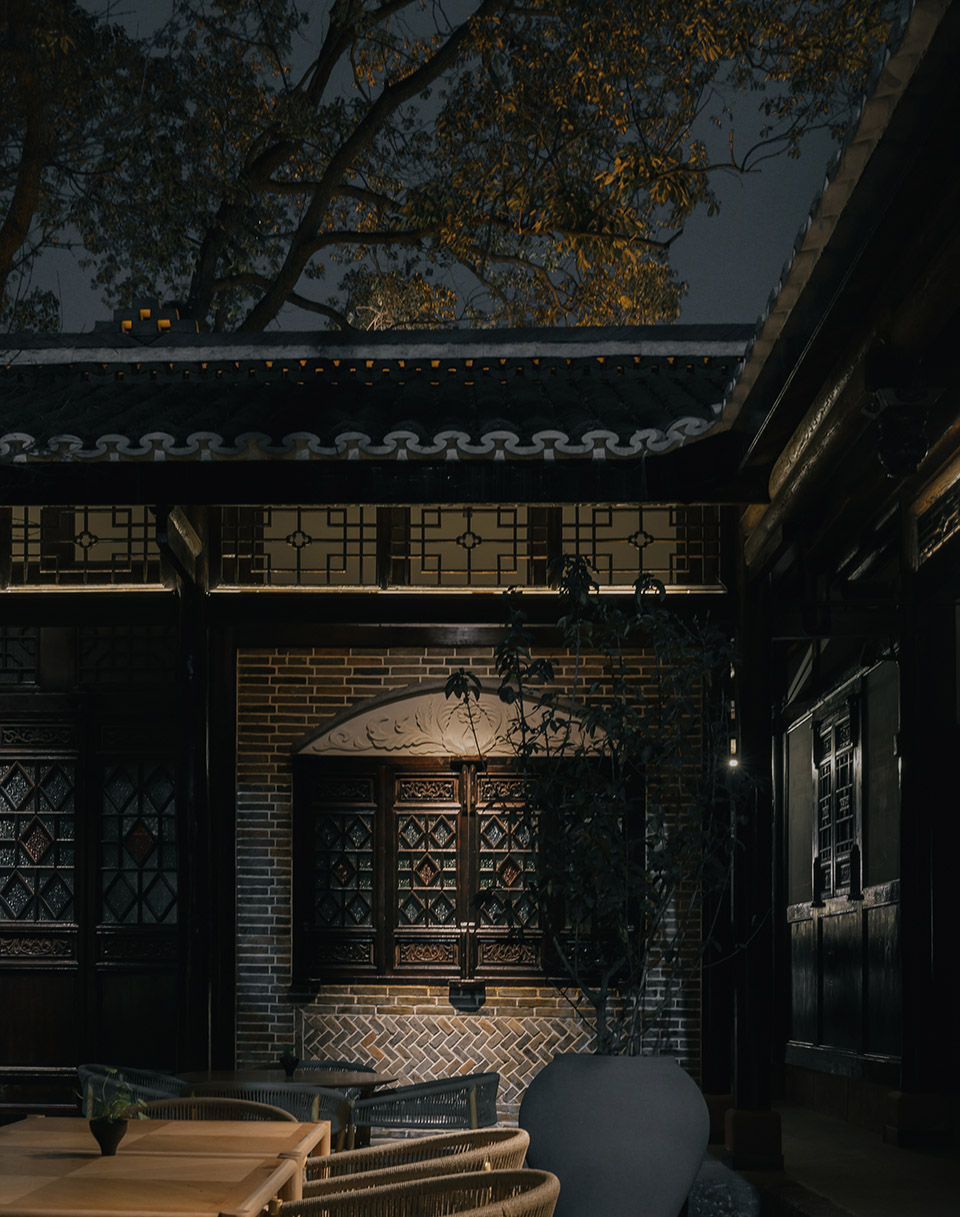砖瓦楼阁,飞檐翘角,方正和曲线的完美结合造就了中国特有的传统建筑。青砖,石瓦,木制门梁,一步一履间仿佛都能嗅到民国时期的气息,在邛崃这片土地上,它宛如这座城市的肌理。留存历史的痕迹,展露人来人往的故事,也叙述着市井生活的点滴。
The bricks and tiles, pavilions, and upturned cornices – the perfect combination of square and curved shapes create a unique traditional Chinese architecture. The green bricks, stone tiles, and wooden door beams, every part of this place seems to be full of the atmosphere of the republican era. On the land of Qionglai, the building is like the texture of the city. It keeps traces of history, reveals the stories of people coming and going, and tells the story of city life.
▼段公馆外观,exterior view of the Duan Residence ©意维建筑空间
我们受邀改造邛崃文脉坊段公馆项目的硬装/软装/照明及庭院设计,使得项目更加完善且符合运营方的运营需求,希望将这些珍贵的建筑文化及历史底蕴得以更好的保留下来,通过克制适度的设计,增添建筑及室内,院落的实用性。
We are invited to renovate the interior/soft decoration/lighting /courtyard design of the project of Duan Residence at Qionglai Wenmaifang . The aim is to make the project more complete and meet the operational needs of the operator. We hope to better preserve this precious architectural culture and historical heritage. Through restrained design, the practicability of architecture, interior, and yard is increased.
▼改造后的院落空间,view of the courtyard after renovation ©意维建筑空间
段公馆是一座拥有百年历史的川西风格院落式建筑,位于中国·四川邛崃市文脉坊。建筑修建于民国早期,占地约568平方米,公馆坐西向东,被列为“邛崃市重点保护建筑”。是由邛崃历史上有名的人物段班级所修的宅院。在传统川西民居穿斗式木制建筑的基础上,搭配了西方哥特式的桃形收尖窗户和圆拱门元素,是一中一西的中国民国建筑典型。
The Duan Residence is a century-old courtyard-style building in the western Sichuan style. It is located in the Wenmaifang area of Qionglai City, Sichuan Province, China. The building was built in the early republic of China and covers an area of about 568 square meters. The residence sits from west to East and is listed as a “key protected building in Qionglai city”. It was built by Duan Banji, a famous figure in Qionglai’s history. It is a typical example of Chinese Republican architecture with a Chinese and a Western twist, based on the traditional western Sichuan folk house with its pierced wooden architecture and western Gothic style peach-shaped pointed windows and round arches.
▼建筑屋顶,the roof ©意维建筑空间
▼入口台阶,entrance steps ©意维建筑空间
中国建筑、空间布局尤以轴线对称见长。这主要体现在受中国“周礼”思想影响较大的建筑体系当中。在川西院落对称美学的基础上,室内功能分明的平面布局,将人的动线有序生动的组合,动静皆宜。
Chinese architecture and spatial layout are particularly characterized by symmetry on the axis. This is mainly reflected in the architectural system greatly influenced by the Chinese idea of ‘Rites of Zhou’. Based on the symmetrical aesthetics of the Chuanxi courtyard, the functional layout of the interior provides an orderly and vivid combination of human movement, with both movement and tranquillity.
▼院落一角,view of the courtyard ©意维建筑空间
西方的建筑是院在外,即院落围绕房屋。而中国建筑则相反,院在内而房在外,即房屋包围院子,房屋、墙垣等围合成院落。我们试图以院为项目的视觉中心,将具有互动性的吧台操作区做的极致简约利落,与周围一圈的老建筑语言形成古今的美学对话,让就餐体验更加丰富有趣。
In western architecture, the courtyard is outside, that is, the courtyard surrounds the house. On the contrary, in Chinese architecture, the courtyard is inside and the house is outside, the house surrounds the courtyard, and the house and walls are enclosed into the courtyard. We have tried to take the courtyard as the visual center of the project, making the interactive bar operation area extremely simple and neat, forming an aesthetic dialogue between ancient and modern times with the language of the surrounding circle of old buildings, making the dining experience richer and more interesting.
▼用餐空间,dining space ©意维建筑空间
▼座椅细部,details ©意维建筑空间
项目改造的重点在于平衡建筑原本的语言文化表达、项目经营方对品牌的理念输出、消费场景功能需求这三者之间的关系。我们保留建筑的传统风貌,化繁为简,将民国时期的川西建筑风貌的精髓与西式健康饮食的文化相融。穿斗排列、抬梁结构、双步架前廊与现代简约美学的室内软装,形成无问东西的视觉感受。
The focus of the renovation is to balance the relationship between the original linguistic and cultural expression of the building, the conceptual output of the project operator to the brand, and the functional needs of the consumer scene. We have preserved the traditional style of the building and simplified it, blending the essence of the western Sichuan architecture of the Republican period with the culture of western-style healthy eating. The arrangement of pierced buckets, raised beam structure, double-stepped frame front porch, and modern minimalist aesthetics of the interior soft decoration create a visual experience that asks no questions about east and west.
▼保留川西建筑风貌,preserving the traditional style ©意维建筑空间
▼望向庭院,view of the courtyard ©小枝@ICYWORKS
国人自古崇尚自然,喜爱自然。儒家崇尚“天人合一”,道家推崇“自然无为”。“天人合一”的思想与对自然美的鉴赏融揉成为传统美学的核心,在这种美学思潮的影响下,人们处理建筑与自然环境的关系早已不是与大自然对立的态度;相反,是抱着亲和,尊重的态度,从而形成了建筑和谐于自然,自然反哺建筑环境的状态。
Since ancient times, the Chinese have been advocating and loving nature. Confucianism advocates the ‘unity of heaven and man’, while Taoism promotes ‘natural inaction’. The idea of “the unity of heaven and man” and the appreciation of natural beauty has become the core of traditional aesthetics. Under the influence of this aesthetic trend, the relationship between architecture and the natural environment has long since been approached not in opposition to nature. On the contrary, it is an attitude of affinity and respect. This has led to a state where architecture is in harmony with nature and nature feeds the built environment.
▼院落中的用餐区,dining space by the corridor in the courtyard ©意维建筑空间
▼庭院景观,landscapes in the courtyard ©意维建筑空间
▼走廊中的用餐区,dining space by the corridor ©意维建筑空间
欣赏带有中国传统风味的建筑的方式可不是静态的“观望”,而是在动态的移动中,感受步移景换,情随境迁。院落式的传统建筑就如一副“画”,以围墙作框,砖瓦为底,桌椅传神,枝叶点缀,游步其中,细思慢品,方能感受这副年代与历史文化的画卷。
The way to appreciate traditional Chinese architecture is not to ‘wait-and-see’ it in a static way. Instead, it is a dynamic and constantly moving experience, where the scenery changes with each step, and the mood changes with the situation. The courtyard-style traditional building is like a painting, with walls as a frame, bricks, and tiles as a background, tables, and chairs vivid, and branches and leaves as decorations. The history and culture of the painting can only be experienced by walking through it and taking time to reflect on it.
▼砖与瓦,bricks and tiles ©意维建筑空间
室外白墙黑柱青瓦花窗,光与影衬托着建筑与院落美,室内古今美学的视觉碰撞,营造出更多有趣的场景体验。宅中有院,院中有屋。
Outdoor white walls, black pillars, green tile and flower windows. Light and shadow set off the beauty of the architecture and courtyard. The visual collision of indoor ancient and modern aesthetics. Creating more interesting scene experiences. There is a yard in the house and a house in the yard.
▼庭院夜景,night view ©意维建筑空间
▼平面图,plan © 炘儒空间设计
Location: Qionglai, China Project complete: Dec. 2020 Area: Interioe:245m²,Yard:133m² Design in charge: Sherry蒋炘儒 Chief Designer & Team: 嘉璐,小哈,宜灵 Photographer:@意维建筑空间,@icyworks
▼项目更多图片


